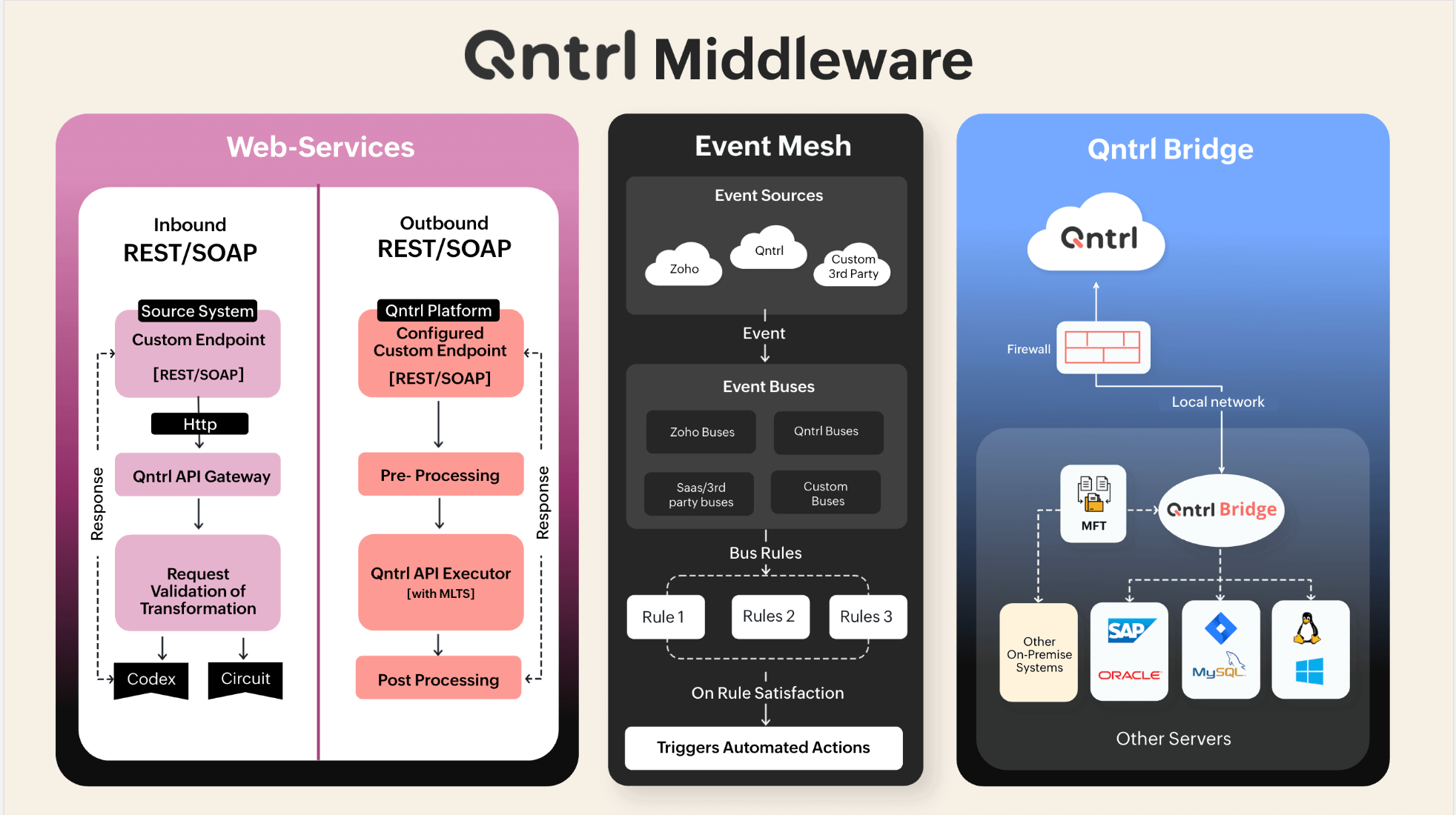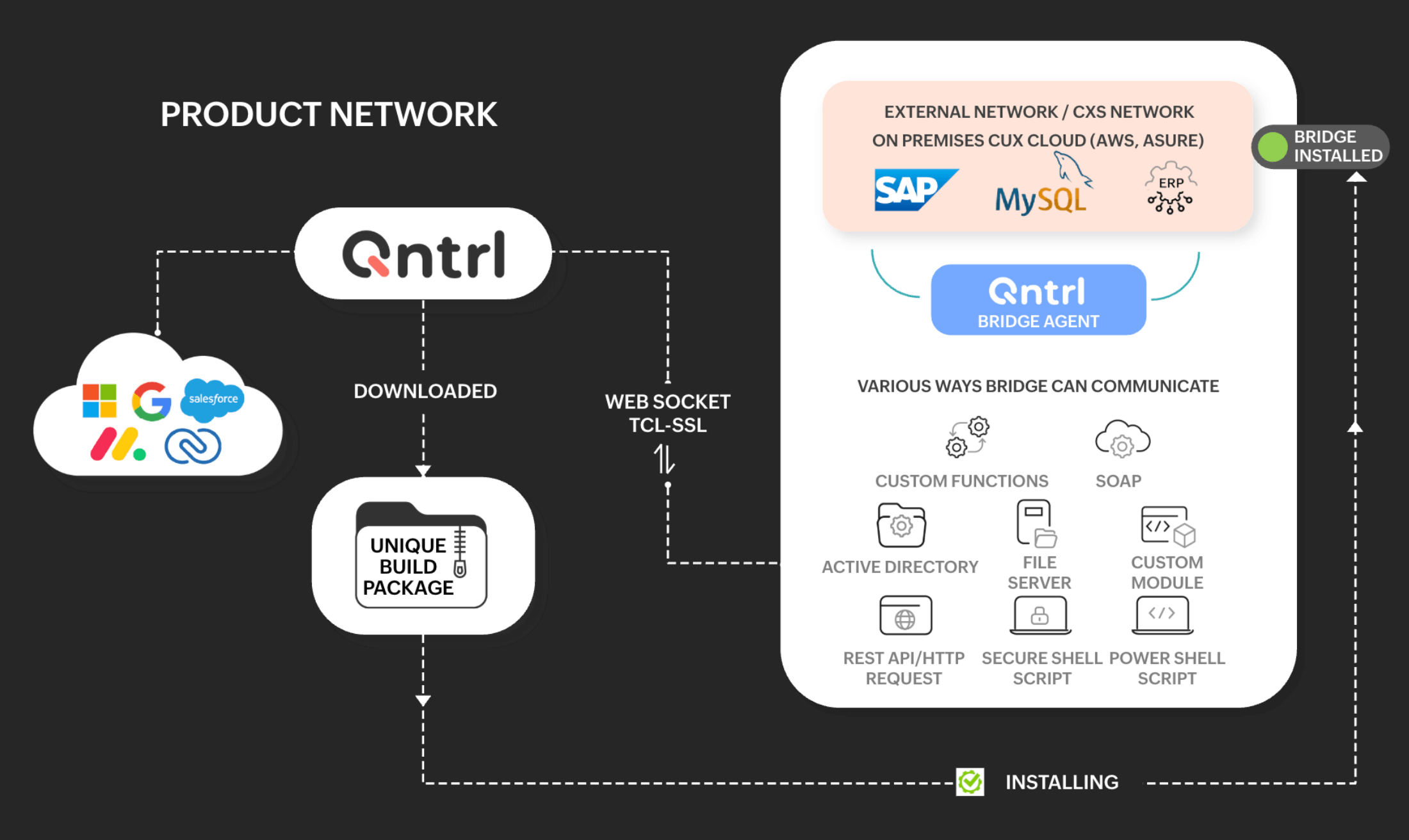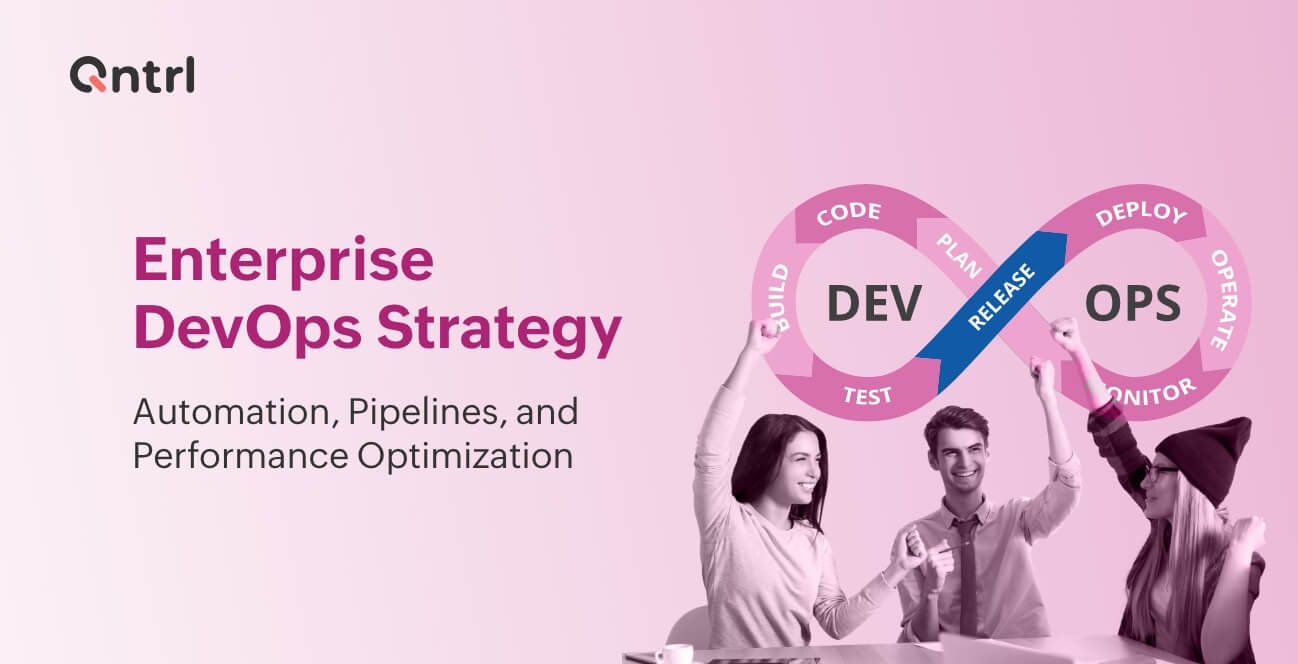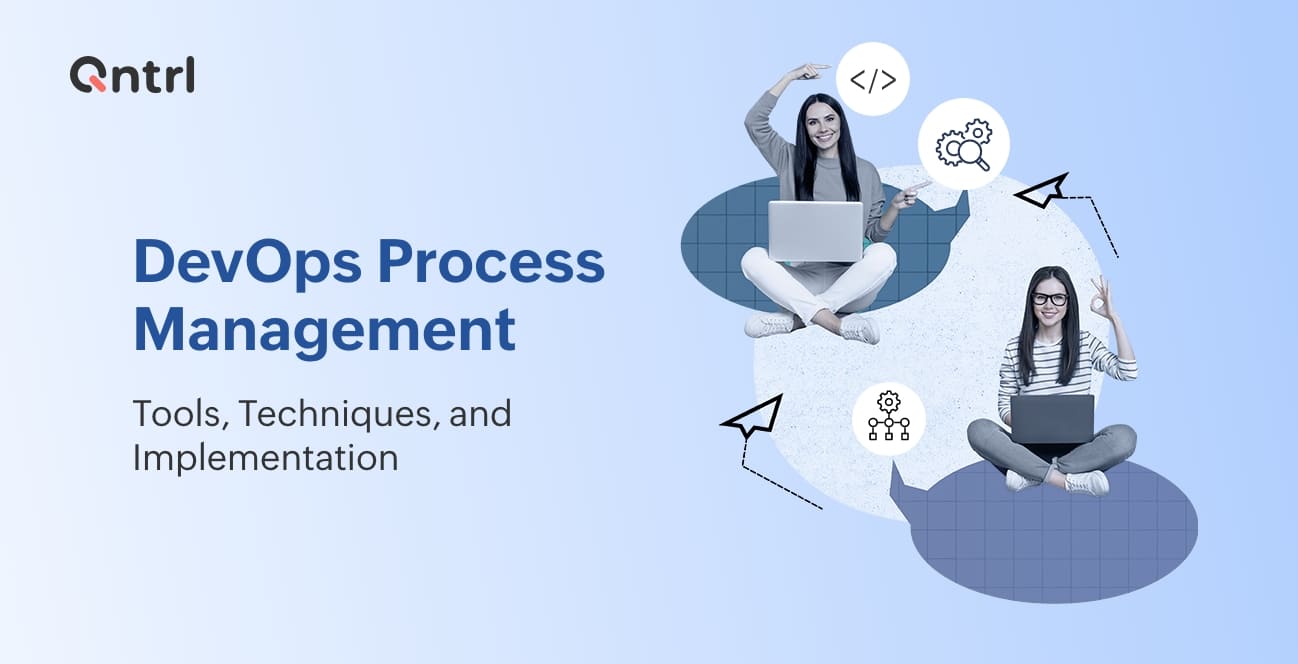Enterprise middleware: How Qntrl powers secure, real-time, end-to-end integrations

Departments across a company often use separate tools—some hosted in the cloud, others installed locally. These systems typically don’t connect, leading to broken workflows, data duplication, and unnecessary manual steps.
Qntrl’s middleware engine solves this by acting as a bridge between these systems. With Qntrl Bridge, Event Mesh, and Web Services, you can orchestrate secure, real-time, event-driven workflows that span cloud and on-premise environments.
Qntrl middleware: Built for visibility, governance, and automation
Qntrl middleware does more than just send data between tools. It makes sure the right process runs, the right rules are followed, and everything is tracked from one control panel.

1. Qntrl: Secure on-premise integration with Bridge
Qntrl sits safely inside your private network. Bridgeconnects the BPM with systems like SAP, Oracle, MySQL, file servers, or Active Directory.
Supported methods include:
- REST and SOAP APIs: Industry-standard ways for systems to talk to each other and exchange structured data.
- Managed file transfers: Move files securely between systems, such as daily reports or invoice batches.
- Secure shell and PowerShell scripting: Execute remote commands or automation scripts on local servers.
- Custom modules: Plug in your own scripts or applications tailored for unique use cases.
- Web sockets with encryption: Maintain real-time, two-way communication channels that are secure and efficient.
Example use case: Qntrl pulls invoice data from SAP using Bridge, initiates a multi-level approval workflow through Circuit, and logs each step for auditing. In parallel, when HR adds a new hire, Qntrl automatically provisions a user account in Active Directory, sets up tool access (e.g., Slack, Google Workspace), and marks the onboarding checklist as complete.
2. Event Mesh: Trigger-based automation
Event Mesh listens for changes in your systems and reacts based on rules.
Supported event sources include:
- Zoho Buses (Zoho product events): Trigger events from Zoho applications like CRM, Desk, Books, or Creator. These let Qntrl listen to activity inside Zoho products and initiate workflows based on those events. For example, a new deal created in CRM could trigger provisioning steps.
- Qntrl Buses (internal system triggers): Events generated from inside Qntrl itself—such as workflow transitions, stage completions, or custom button clicks. These buses help you create deeply embedded automations between internal Qntrl components.
- Third-party tools like Jira or Slack: External systems can send events to Qntrl via APIs or webhooks. For example, a ticket created in Jira or a message in Slack can trigger workflows, updates, or notifications inside Qntrl.
- Custom-built event streams: You can create your own events using in-house systems or niche tools by pushing signals to Qntrl via APIs. This lets Qntrl act on events from practically any source.
Example: A user is added in Zoho CRM. Event Mesh triggers a rule to check their role. If the role is regional manager, Qntrl access to internal systems.
3. Web Services: Two-way API communication
Qntrl can receive data (inbound) or send it (outbound) using REST or SOAP APIs.
Each API call moves through:
- Gateway: validation and security – The first checkpoint for incoming API data. Gateway ensures that the data received is secure, properly authenticated, and valid before it proceeds further into the system.
- Pre-processing: transform data if needed – Once validated, incoming data may be transformed—renamed, reformatted, or enriched with additional context—so it fits the workflow logic.
- Codex: check business rules – Codex runs conditional checks and evaluates business logic—such as thresholds, exceptions, or custom validations—before allowing a workflow to proceed.
- Circuit: run workflows – Circuit is where the actual workflow gets executed. It performs the actions based on your design—routing, approvals, notifications, updates, etc.
- Post-processing: format response or update logs – After workflow execution, data is packaged and sent back (if needed) or written into logs and systems for tracking, analysis, or audit.
This lets you integrate systems like payroll, ticketing, or CRM with full control.
Middleware use cases with Qntrl

Use cases across departments
Qntrl supports process automation in the following ways:
HR: When a new employee is added in the HR system, Qntrl detects the event through Event Mesh. It then triggers a Circuit workflow that creates accounts in Active Directory, provisions access to tools like Slack, Google Workspace, or Zoho apps via Web Services, and updates onboarding status in an internal dashboard.
IT: Suppose there's a scheduled server update. An automated trigger in Qntrl initiates a PowerShell script via Bridge that restarts the required services on a local server. If the script fails, Qntrl logs the error, alerts the IT admin, and retries based on fallback logic defined in Codex.
Finance: When a vendor submits an invoice, Qntrl picks it up from the ERP system through Bridge or an API. It checks if the invoice exceeds a threshold and routes it for multi-level approval. After approvals, Qntrl pushes the transaction details to the finance system using Web Services and stores a copy in the document management tool.
Support: A customer raises a support ticket in Zendesk. Qntrl syncs this with Zoho CRM using API automation. If the issue is tagged "high-priority," a rule escalates the ticket, updates the customer profile in CRM, and notifies the assigned support agent on Slack.
Procurement: A department raises a request for a new vendor. Qntrl routes the request through compliance and finance review stages. Once approved, it triggers actions to provision the vendor in the ERP system and updates records across procurement and finance tools.
Why Qntrl's middleware is different
Eliminates manual handovers and sync issues
Replaces fragile scripts and workarounds
Keeps tools in sync without exposing internal data
Enables business-driven automation with IT oversight
Build without chaos
Qntrl middleware gives you a clean, reliable way to connect your systems. It organizes the flow of data, enforces rules, and provides oversight—all while staying secure.
It’s about control, clarity, and making your operations work together smoothly.
Enjoying your reading?
Enjoy organization and visibility too!
Qntrl can help you organise, control and improve production and projects in your team.







